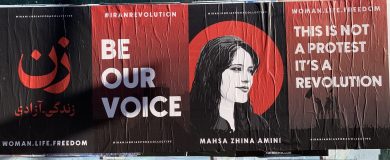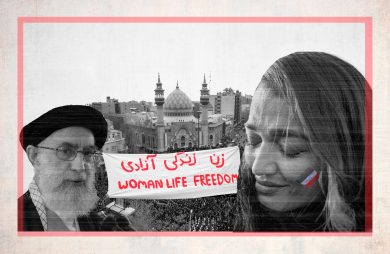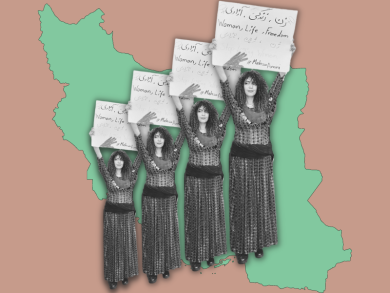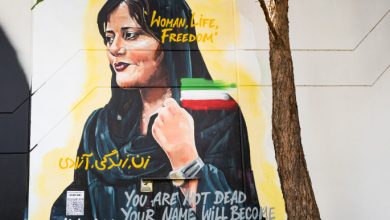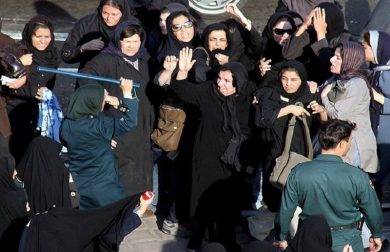In the heart of Iran’s ongoing struggle for freedom and human rights, Iranian women have emerged as the leading force of resistance against one of the most powerful and oppressive institutions in the country: the Islamic Revolutionary Guard Corps (IRGC). The IRGC, designated by the United States as a Foreign Terrorist Organization (FTO), plays a pivotal role in enforcing the regime’s authoritarian rule through violence, surveillance, and systematic repression, particularly targeting women.
Despite these oppressive tactics, Iranian women are defying the IRGC’s oppression through acts of civil disobedience, digital activism, and public protest. Their courage has inspired a global movement, shining a spotlight on the intersection of gender, power, and freedom in Iran.
This opinion piece will explore:
• The methods the IRGC uses to oppress women,
• The ways in which Iranian women are resisting,
• The global implications of their struggle, and
• Why the world must stand with Iranian women in their fight for freedom.
1. The IRGC’s Role in Oppressing Iranian Women
A. Enforcing Mandatory Hijab and Gender Laws
Since the 1979 Islamic Revolution, Iranian women have been subjected to compulsory hijab laws and strict gender norms. The IRGC, through its Basij militia and morality police, ensures these laws are enforced by:
• Arresting women for “improper hijab.”
• Imposing fines, beatings, and prison sentences for those who defy dress codes.
• Conducting public shaming campaigns and forcing televised confessions from those accused of violating these norms.
The IRGC uses these policies as a means of control, not merely religious enforcement. The hijab, in this context, has become a symbol of state domination over women’s bodies and autonomy.
B. Suppression of Women’s Rights Movements
Women’s rights activists have faced harsh repercussions for their advocacy.
• Nasrin Sotoudeh, a prominent human rights lawyer, was sentenced to 38 years in prison and 148 lashes for defending women protesting the compulsory hijab.
• Narges Mohammadi, a Nobel Peace Prize winner, remains imprisoned for her work against the death penalty and gender-based oppression.
These cases represent a pattern of state-sponsored repression—a clear attempt by the IRGC to silence the most vocal critics of the regime’s gender policies.
C. Violent Crackdowns on Women-Led Protests
The 2022 protests sparked by the death of Mahsa Amini, a 22-year-old woman who died in IRGC custody, marked a turning point in Iran’s resistance movement. Women took to the streets, chanting:
“Women, Life, Freedom”
The IRGC responded with:
• Live ammunition, resulting in the deaths of hundreds, including women and teenage girls.
• Mass arrests, with many detainees reporting torture and sexual violence in IRGC-run prisons.
• Internet blackouts and social media restrictions, cutting off communication with the outside world.
Despite these brutal tactics, Iranian women remain undeterred.
2. Acts of Defiance: How Iranian Women Are Resisting
A. Protests and Public Acts of Rebellion
Women are at the forefront of protests, turning personal acts into political statements:
• Removing hijabs in public, risking arrest and imprisonment.
• Cutting their hair as a symbol of mourning and resistance, echoing Kurdish traditions of defiance.
• Leading street protests in major cities like Tehran, Mashhad, and Shiraz, often facing live bullets and beatings.
The visibility of women in these protests is unprecedented, challenging the regime’s attempt to keep them marginalized and invisible.
B. Everyday Resistance
Resistance extends beyond protests into everyday life:
• Driving without hijabs, despite cameras and checkpoints.
• Public displays of affection, which the regime criminalizes.
• Refusing gender segregation in schools and public spaces.
Each everyday act sends a clear message: the regime’s control is being rejected.
C. Digital Activism
Despite the IRGC’s control of digital spaces, Iranian women are using technology to resist:
• Social media campaigns like #MyStealthyFreedom, where women post photos without hijabs.
• Encrypted apps to organize protests and document state violence.
• Hacktivist groups leaking IRGC documents, exposing corruption and abuse.
Even when internet access is cut, women find new ways to share their stories, proving the power of digital resistance.
3. Stories of Courage: Iranian Women Who Refused to Be Silenced
A. Mahsa Amini: The Spark of a Revolution
Mahsa Amini’s death in 2022 after being detained for “improper hijab” sparked nationwide protests. Her name became a global symbol of resistance, representing all women who have suffered under the regime’s oppressive laws.
B. Narges Mohammadi: A Voice from Prison
Narges Mohammadi, despite repeated imprisonments, continues to advocate for women’s rights and against the death penalty. Her Nobel Peace Prize in 2023 is a testament to her unbreakable spirit.
C. Masih Alinejad: Defiance in Exile
Masih Alinejad, founder of #MyStealthyFreedom, lives in exile, having survived IRGC assassination attempts. From abroad, she amplifies the voices of Iranian women, ensuring their stories are heard globally.
These women represent the face of Iran’s revolution—courageous, resilient, and unyielding.
4. The IRGC’s Tactics: Fear, Violence, and Control
The IRGC uses a combination of tactics to try to suppress the women-led movement:
A. Brutal Crackdowns
• Live ammunition used against peaceful protesters.
• Mass arrests followed by torture, rape, and forced confessions.
• Extrajudicial killings, particularly targeting young women and ethnic minorities.
B. Digital Warfare
• Hacking activist accounts, spreading misinformation, and running disinformation campaigns globally.
• Surveillance technology to track and arrest protesters.
C. Psychological Warfare
• Threats to families of activists.
• Public executions as a deterrence tactic.
• State media propaganda, portraying protesters as “foreign agents”.
Despite these brutal measures, the resistance continues, showing that the regime’s tools of fear are losing power.
5. The Role of Young Women: A Generational Revolution
Iran’s Generation Z is leading a revolution unlike any other:
• Teenage girls removing hijabs in classrooms.
• University students organizing sit-ins, boycotts, and marches.
• Young influencers using social media to spread protest messages.
Nika Shakarami (16) and Sarina Esmailzadeh (16) were both killed during protests, becoming martyrs of the movement. Their stories inspired nationwide and global outrage, fueling further demonstrations.
This generation is fearless, unwilling to compromise, and ready to bring change—even at the highest personal cost.
6. Global Solidarity: Why the World Must Act
A. Designating the IRGC as a Terrorist Organization
• The United States has already designated the IRGC as an FTO.
• The European Union, UK, and Canada must follow to:
- Cut IRGC funding sources.
- Prevent international business with IRGC-linked entities.
- Send a clear message that gender-based oppression will not be tolerated.
B. Supporting Digital Freedom
• Provide VPNs, encrypted apps, and satellite internet to bypass censorship.
• Tech companies must block IRGC disinformation networks.
C. Amplifying Women’s Voices
• Media outlets must continue to cover the resistance, avoiding regime narratives.
• International awards and recognition for activists raise their global profiles, offering protection.
Conclusion: The Future is Female—and Free
Iranian women are not just fighting for gender equality—they are leading a revolution for freedom, democracy, and dignity. The IRGC’s attempts to silence them through violence and fear have failed, as each act of oppression only strengthens the resolve of the resistance.
Join Our Newsletter!
Stay informed with the latest updates, news, and ways to take action in the fight for justice and global security. Sign up now to get updates delivered straight to your inbox!

